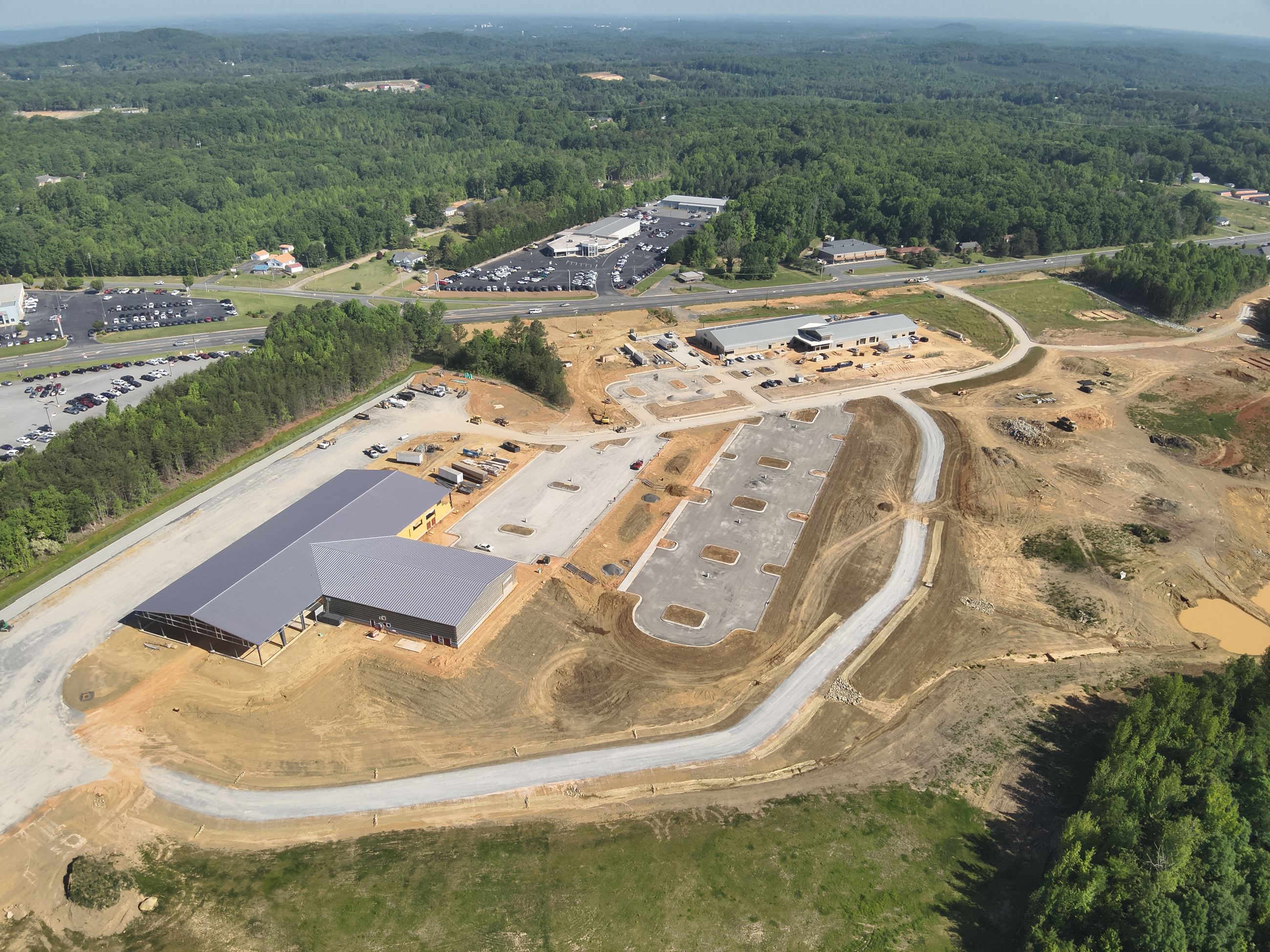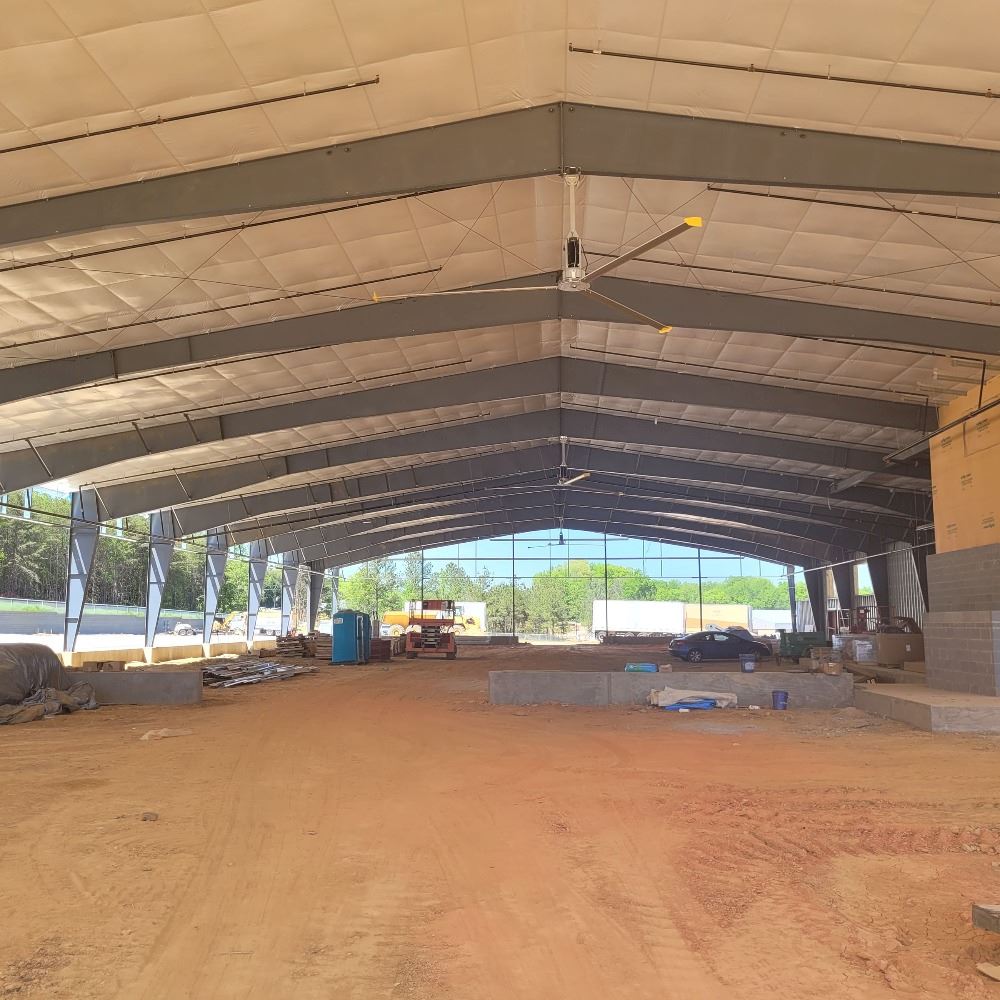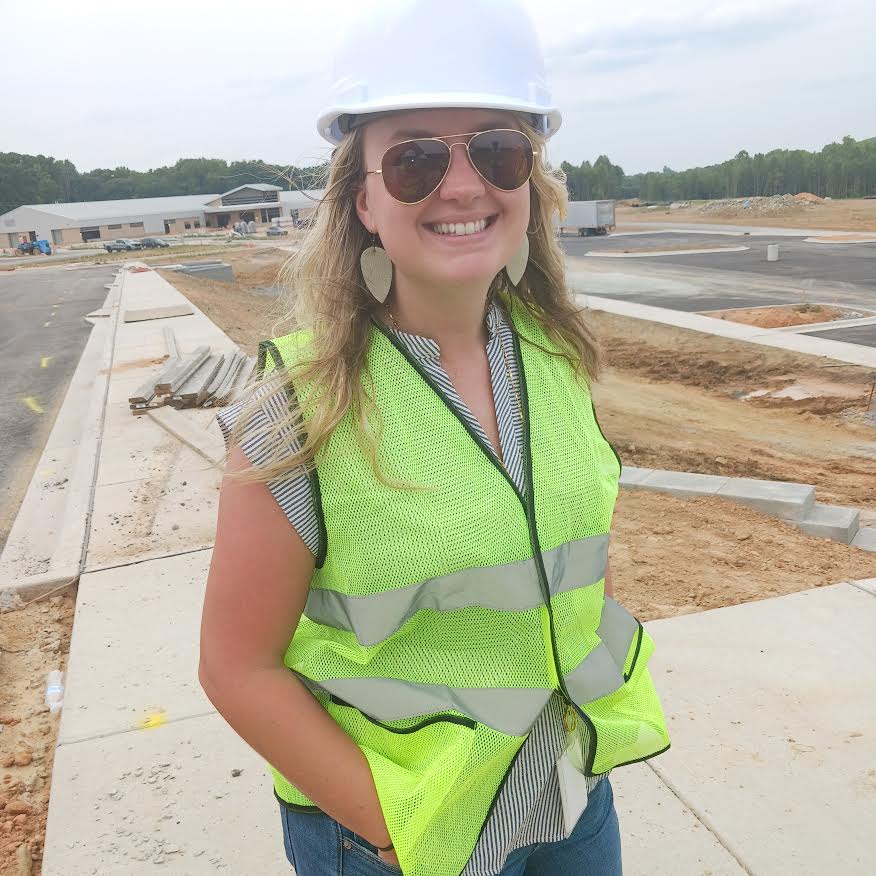Welcome!

A drone’s eye view of the Ag Center project under construction (Provided by Randolph County)
Ag Center’s coming: what will it offer?
This is the first of a four-part series on the Randolph County Agricultural Center, which is scheduled to open in September.
ASHEBORO — After years of planning, the Randolph County Agricultural Center is aiming toward a fall opening.
Being developed on a 104-acre site on East Dixie Drive in Asheboro, the project features two large buildings and several smaller structures. When the Ag Center is completed, the grounds will be landscaped with plants, flowers and even fruit trees.
On June 4, the Randolph Hub was given a tour of the site by county commissioner David Allen, county engineer Paxton Arthurs, Agricultural Center coordinator Taylor Wright and Amy Rudisill, public information officer for the county.

The Ag Center has also been dubbed the Farm, Food and Family Education Center, exemplifying its mission statement: “The Randolph County Agricultural Center is a dynamic, innovative, and collaborative place for people and organizations to build systems that strengthen economies, enhance resiliency, and build community.”
With that in mind, the tour started in the 28,138-square-foot Education and Resources Center, which faces Dixie Drive. It’s described as “a hub for hands-on learning, collaboration, and skill-building. It includes classrooms, meeting spaces, a demonstration kitchen, digital skills lab, commercial kitchens and food hub.”
Upon entering the food hub, Wright described it as a means to “connect local producers with institutions and families to increase food security in Randolph County and surrounding communities.”
Rather than hauling produce to a farmers market and hoping for sales, soon farmers will be able to put their products online for customers to order. Then they’ll meet at the food hub for delivery of just what is needed.
“It’s a good deal for the farmers and the customers,” Wright said.
The food hub features a walk-in cooler and freezer with room for two more of each. There will be epoxy floors and waterproof walls for easy cleaning. The food hub will also have a backup generator in case of power outages.
The two commercial kitchens are completely independent with separate airflow to prevent cross-contamination. They will be available for rent by entrepreneurs, caterers or others who don’t have their own commercial kitchen, which is a requirement for sales of prepared foods to the public.
There will be a digital skills lab, a part of Cooperative Extension, with computers and other equipment for training and workshops. It will have a capacity of 67 persons.
A large meeting room — which can be separated into two rooms by a sound-proof partition — will have a total capacity of 184. Other rooms include a general-use classroom, two board rooms, a 4-H classroom, a lab for gardeners and a demonstration kitchen.
Cooperative Extension and Soil & Water will be moving their offices into the Education and Resources Center when it’s completed.
Just outside the Education and Resources Center is the learning greenhouse. Engineer Arthurs said the ventilation system pulls air in one side of the building, runs it through a swamp cooler and out the other side. There will also be raised beds outside.
Across the campus will be the Event Center and Arena.
The 3,779-square-foot Event Center has a total seating capacity of 540 persons. But it can be set up with rectangular tables to accommodate 384 people or with round tables to seat 320.
Serving the Event Center will be a concession area and a catering kitchen.
Hopes are that the Event Center with its stage will attract large meetings, such as regional and statewide conventions, or local events including dances or graduations. In emergencies, it can be used as a shelter.
The Arena, which measures 17,614 square feet in the main demonstration area, will host livestock shows and can be set up as desired. The bleachers will seat 293 spectators. The Arena could be used for large concerts under a roof.
There will be an animal staging area inside the Arena as well as a wash bay. Just outside will be plenty of parking space for trailers.
Across the way, there’s a building for material storage, an equipment shed and a workshop.
Much planning has gone into development and construction of the Ag Center. Commissioner Allen said, “IT (Information Technology) has been a big part of the process. Other county (agencies) have been involved. There’s been a lot of effort you don’t think about.”
Meet the Ag Center coordinator
Taylor Wright, the Ag Center coordinator, is a native of Moore County and graduate of Appalachian State University. She came to Randolph County in 2016 as a classroom teacher for the Randolph County School System before moving to Cooperative Extension in 2022.

“My career in Cooperative Extension really shaped my understanding of how powerful community-centered programming can be,” she said, “and that understanding quickly grew into a passion for the Ag Center.”
Wright gave her thoughts about the Ag Center:
“This project is exciting, challenging and deeply meaningful. A lot of folks have collaborated and worked hard to create a space that reflects both where our county comes from and where we’re headed.
“Our vision for the Ag Center is rooted in connection — between residents, between generations, and between public services that can work better together under one roof.
“I see the Ag Center as a living, growing part of our county. It’s a place where both youth and adults can learn, where local food systems can thrive through the food hub, and where the community can come together — whether that’s at a livestock show in the Arena or a community celebration in the Event Center. It’s built to serve many purposes, but at its core, it’s about connection.”
